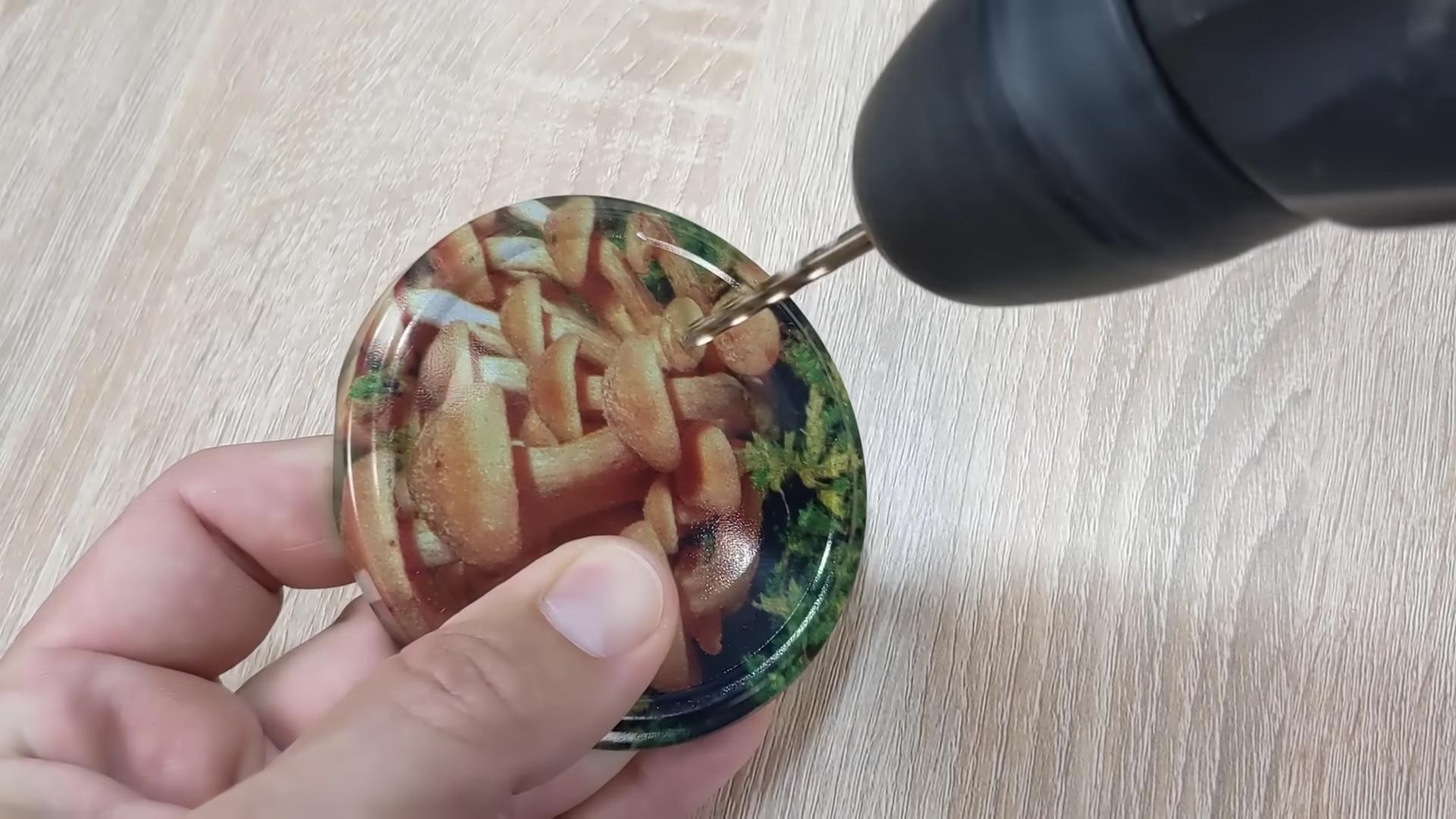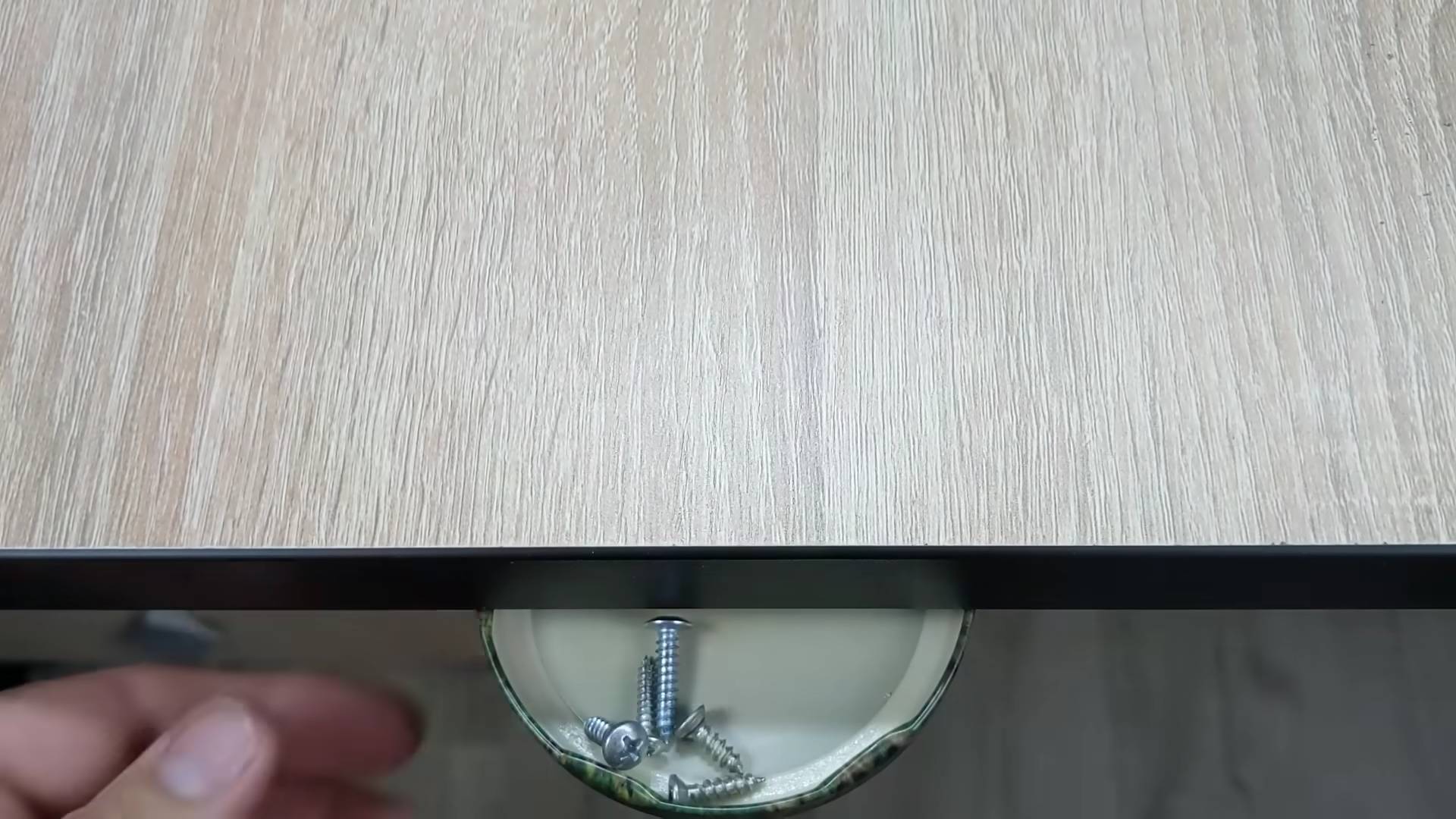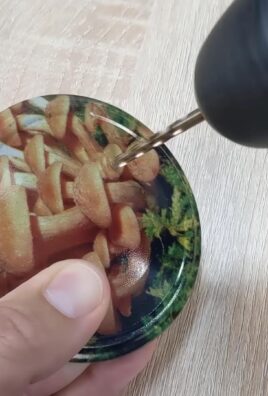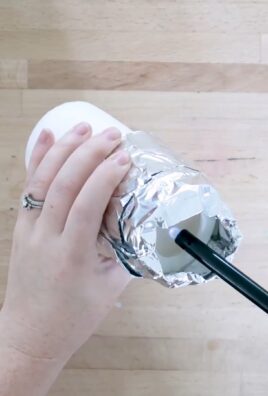Smart DIY Work Hacks: Ever feel like your home projects take twice as long and cost three times as much as you planned? I know I have! We’ve all been there, wrestling with stubborn screws, battling paint drips, and generally feeling like our DIY dreams are turning into DIY disasters. But what if I told you there’s a better way? A way to conquer your to-do list with clever tricks and ingenious solutions that save you time, money, and a whole lot of frustration?
From ancient civilizations using natural pigments for stunning wall art to the resourceful pioneers crafting tools from whatever they could find, the spirit of DIY has always been about ingenuity and resourcefulness. Today, that spirit lives on, but with a modern twist. We have access to a wealth of information and materials, but sometimes, the sheer volume can be overwhelming. That’s where these smart DIY work hacks come in.
In this article, I’m going to share my favorite tried-and-true tips and tricks that will transform the way you approach your home projects. Whether you’re a seasoned DIY enthusiast or just starting out, these hacks will help you work smarter, not harder. Get ready to unlock a world of creative possibilities and finally achieve those home improvement goals you’ve been dreaming of. Let’s dive in and discover how to make your next project a resounding success!

Transform Your Workspace: DIY Desk Organizer from Cardboard Boxes
Hey there, fellow DIY enthusiasts! Are you tired of a cluttered desk that makes it impossible to focus? I know I was! That’s why I embarked on a mission to create a functional and stylish desk organizer using something we all have lying around: cardboard boxes! This project is not only budget-friendly but also a fantastic way to upcycle and personalize your workspace. Let’s get started!
Materials You’ll Need
Before we dive in, let’s gather our supplies. Here’s what you’ll need:
* Various sizes of cardboard boxes (think cereal boxes, shoe boxes, shipping boxes – get creative!)
* Ruler or measuring tape
* Pencil
* Craft knife or scissors (adult supervision recommended for younger crafters!)
* Hot glue gun and glue sticks (or strong craft glue)
* Wrapping paper, scrapbook paper, fabric scraps, paint, or any decorative material you like
* Optional: Decorative embellishments like ribbon, buttons, stickers, or washi tape
* Cutting mat (to protect your work surface)
Planning Your Organizer
The key to a successful desk organizer is planning. Think about what you need to store and how you want it organized.
* Inventory Your Desk Clutter: Take a good look at everything on your desk. What items do you use most frequently? What needs to be easily accessible? What can be tucked away?
* Sketch Your Design: Grab a piece of paper and sketch out your ideal desk organizer. Consider different compartments for pens, pencils, notepads, paperclips, and other essentials. Think about the height and width of each compartment based on what you’ll be storing.
* Box Selection: Based on your sketch, select the cardboard boxes that best fit your design. You might need to adjust your design slightly based on the boxes you have available. Don’t be afraid to get creative!
* Consider Functionality: Think about adding features like pen holders, small drawers (using smaller boxes), or even a phone stand. The possibilities are endless!
Assembling the Organizer: Step-by-Step Instructions
Now for the fun part – putting it all together!
1. Prepare Your Boxes: Start by cleaning your cardboard boxes and removing any tape or labels. If necessary, reinforce the boxes with extra tape or glue, especially if they are flimsy.
2. Cut and Shape the Boxes: Using your craft knife or scissors, carefully cut and shape the boxes according to your design. Remember to use a cutting mat to protect your work surface.
* Creating Different Heights: You can cut boxes to different heights to create tiered compartments. This is great for organizing items of varying sizes.
* Making Dividers: Use extra pieces of cardboard to create dividers within the boxes. This will help keep your items neatly separated.
* Forming Pen Holders: Small, narrow boxes or even cardboard tubes (from paper towels or toilet paper) can be used to create pen holders.
3. Dry Fit the Arrangement: Before gluing anything together, arrange the boxes on your work surface to make sure everything fits and looks the way you want it to. This is your last chance to make any adjustments to the design.
4. Glue the Boxes Together: Once you’re happy with the arrangement, start gluing the boxes together using your hot glue gun or strong craft glue. Apply glue to the edges of the boxes and press them firmly together. Hold them in place for a few seconds until the glue sets.
* Working in Sections: It’s often easier to glue the boxes together in smaller sections rather than trying to glue everything at once.
* Reinforcing the Joints: For extra strength, you can add strips of cardboard or tape to reinforce the joints between the boxes.
5. Let the Glue Dry Completely: Allow the glue to dry completely before moving on to the next step. This will ensure that your organizer is sturdy and durable.
Decorating Your Organizer: Adding Your Personal Touch
Now comes the really fun part – decorating your desk organizer! This is where you can let your creativity shine and personalize it to match your style.
1. Choose Your Decorative Material: Select the wrapping paper, scrapbook paper, fabric scraps, paint, or other decorative material you want to use. Consider the colors and patterns that will complement your workspace.
2. Measure and Cut the Material: Measure the surfaces of the boxes and cut the decorative material to the appropriate size. Remember to leave a little extra material around the edges for wrapping.
3. Apply Adhesive: Apply glue or adhesive to the surface of the box and carefully smooth the decorative material over it. Use a ruler or credit card to smooth out any wrinkles or bubbles.
* Wrapping the Edges: Wrap the extra material around the edges of the box and glue it to the inside. This will give your organizer a clean and professional look.
* Using Paint: If you’re using paint, apply several thin coats rather than one thick coat. This will prevent drips and ensure a smooth finish.
4. Add Embellishments: Once the decorative material is dry, you can add embellishments like ribbon, buttons, stickers, or washi tape. Get creative and have fun!
* Ribbon Accents: Wrap ribbon around the edges of the boxes or tie bows to add a touch of elegance.
* Button Details: Glue buttons to the front of the boxes for a playful and whimsical look.
* Washi Tape Designs: Use washi tape to create patterns and designs on the boxes.
5. Seal the Decoration (Optional): If you’ve used paint or delicate paper, consider sealing the decoration with a clear coat of varnish or sealant. This will protect it from scratches and wear.
Adding Finishing Touches
Almost there! A few final touches will make your desk organizer even more functional and aesthetically pleasing.
1. Label the Compartments: Use labels to identify the contents of each compartment. This will help you stay organized and easily find what you need. You can use label makers, stickers, or even handwritten labels.
2. Add Non-Slip Pads: Place non-slip pads or felt pads on the bottom of the organizer to prevent it from sliding around on your desk.
3. Arrange Your Supplies: Now it’s time to fill your desk organizer with your supplies! Arrange everything neatly and logically, keeping your most frequently used items within easy reach.
4. Step Back and Admire Your Work: Take a moment to admire your handiwork! You’ve created a functional and stylish desk organizer that will help you stay organized and productive.
Alternative Decoration Ideas
Feeling adventurous? Here are a few more decoration ideas to inspire you:
* Fabric Covered Organizer: Use fabric scraps to cover your boxes for a cozy and textured look. Burlap, denim, or even old t-shirts can be used.
* Decoupage Organizer: Use decoupage techniques to create a collage of images and patterns on your boxes.
* Chalkboard Paint Organizer: Paint your boxes with chalkboard paint and use chalk to label the compartments. This is a great way to change the labels as needed.
* Metallic Accents: Add metallic paint or foil to your boxes for a glamorous and sophisticated look.
Troubleshooting Tips
Encountering some snags? Here are a few troubleshooting tips to help you out:
* Boxes Not Sticking Together: Make sure you’re using a strong glue and applying enough pressure when gluing the boxes together. You can also use clamps or weights to hold the boxes in place while the glue dries.
* Decorative Material Wrinkling: Use a ruler or credit card to smooth out any wrinkles or bubbles in the decorative material. You can also try using a spray adhesive instead of glue.
* Organizer Feeling Unstable: Reinforce the joints between the boxes with extra cardboard or tape. You can also add a base to the organizer to make it more stable.
Maintaining Your Desk Organizer
To keep your desk organizer looking its best, follow these simple maintenance tips:
* Dust Regularly: Dust your organizer regularly with a soft cloth to prevent dust buildup.
* Clean Spills Immediately: If you spill anything on your organizer, clean it up immediately with a damp cloth.
* Replace Damaged Decorations: If any of the decorations become damaged, replace them as needed.
Final Thoughts
Creating a DIY desk organizer from cardboard boxes is a rewarding and budget-friendly project that can transform your workspace. By following these step-by-step instructions and using your creativity, you can create a functional and stylish organizer that will help you stay organized and productive. So, gather your supplies, get crafting, and enjoy your newly organized desk! I hope you found this guide helpful and inspiring. Happy organizing!

Conclusion
So, there you have it! This simple yet incredibly effective DIY trick is more than just a clever hack; it’s a game-changer for anyone looking to streamline their workflow and boost productivity. We’ve walked you through the steps, highlighting the ease and accessibility of this method. But why is this particular DIY approach a must-try?
Firstly, it’s about efficiency. In today’s fast-paced world, time is a precious commodity. This DIY solution helps you reclaim valuable minutes (or even hours!) by simplifying a task that might otherwise be cumbersome and time-consuming. Think of all the things you could accomplish with that extra time – tackling a new project, spending quality time with loved ones, or simply relaxing and recharging.
Secondly, it’s about cost-effectiveness. Instead of investing in expensive tools or specialized equipment, this DIY trick utilizes readily available materials, saving you money and reducing waste. It’s a sustainable and budget-friendly approach that aligns with the growing trend of mindful consumption.
Thirdly, it’s about empowerment. There’s a certain satisfaction that comes from creating something useful with your own hands. This DIY project allows you to tap into your creativity and problem-solving skills, fostering a sense of accomplishment and self-reliance.
But the beauty of this DIY trick lies not only in its simplicity and effectiveness but also in its adaptability. Feel free to experiment with different materials and techniques to tailor it to your specific needs and preferences. For example, if you’re working with delicate materials, you might consider using a softer adhesive or a gentler application method. Or, if you’re looking for a more permanent solution, you could explore alternative fastening options.
Here are a few suggestions and variations to get you started:
* Color Coding: Use different colored materials to organize your work or projects. This is especially helpful for visual learners.
* Customization: Add decorative elements to personalize your DIY creation. This can make it more aesthetically pleasing and enjoyable to use.
* Material Alternatives: Experiment with different materials to find the best fit for your specific needs. Consider factors like durability, flexibility, and cost.
* Size Adjustments: Modify the dimensions of your DIY project to accommodate different sizes of objects or workspaces.
Ultimately, the goal is to create a solution that works best for you. Don’t be afraid to think outside the box and get creative!
We firmly believe that this smart DIY work hack has the potential to transform the way you approach your tasks. It’s a simple, affordable, and empowering solution that can save you time, money, and frustration. So, what are you waiting for? Give it a try and see for yourself!
We’re confident that you’ll be amazed by the results. And once you’ve experienced the benefits of this DIY trick, we encourage you to share your experience with us and the wider community. Let us know what worked well for you, what challenges you encountered, and any modifications you made along the way. Your feedback will help us refine and improve this DIY solution, making it even more accessible and effective for everyone.
Share your photos, videos, and tips on social media using the hashtag #SmartDIYHacks. We can’t wait to see what you create!
FAQ
What exactly is a “DIY work hack,” and why should I care?
A DIY work hack is a simple, often low-cost, solution that you create yourself to improve efficiency, organization, or productivity in your work environment. You should care because these hacks can save you time, money, and frustration, allowing you to focus on more important tasks and achieve your goals more effectively. This particular hack focuses on [mention the specific problem the hack solves, e.g., cable management, desk organization, etc.].
What materials do I need for this DIY trick, and where can I find them?
The materials required for this DIY trick are typically readily available and inexpensive. [List the specific materials needed, e.g., adhesive hooks, zip ties, cardboard boxes, etc.]. You can usually find these materials at your local hardware store, office supply store, or even online retailers like Amazon. Consider repurposing materials you already have at home to further reduce costs and promote sustainability.
Is this DIY trick suitable for all types of workspaces?
While this DIY trick is generally versatile, its suitability depends on the specific characteristics of your workspace. Consider factors like the size of your desk, the type of equipment you use, and the overall layout of your office. If you have a small or cluttered workspace, you may need to adapt the DIY trick to fit your specific needs. Conversely, if you have a larger workspace, you may be able to scale up the DIY trick to accommodate more items.
How long will it take to complete this DIY project?
The time required to complete this DIY project will vary depending on your skill level and the complexity of the modifications you make. However, in most cases, you should be able to complete it in under an hour. The key is to gather all the necessary materials beforehand and follow the instructions carefully. Don’t be afraid to take breaks if you need them, and remember to have fun!
What if I’m not very “handy” or experienced with DIY projects?
Don’t worry! This DIY trick is designed to be simple and accessible, even for beginners. The instructions are clear and concise, and the materials are easy to work with. If you’re feeling intimidated, start with a small-scale version of the project and gradually work your way up. There are also plenty of online resources, such as video tutorials and step-by-step guides, that can provide additional support.
Can I customize this DIY trick to better suit my needs?
Absolutely! Customization is one of the best things about DIY projects. Feel free to experiment with different materials, techniques, and designs to create a solution that perfectly fits your specific needs and preferences. Consider factors like the color scheme of your workspace, the type of equipment you use, and your personal style. Don’t be afraid to think outside the box and get creative!
How durable is this DIY solution, and how long will it last?
The durability of this DIY solution will depend on the quality of the materials you use and the care you take in constructing it. If you use high-quality materials and follow the instructions carefully, it should last for a considerable amount of time. However, it’s important to remember that this is a DIY project, so it may not be as durable as a commercially manufactured product. Regularly inspect the DIY solution for signs of wear and tear, and make any necessary repairs or replacements as needed.
What are some common mistakes to avoid when attempting this DIY trick?
Some common mistakes to avoid when attempting this DIY trick include using the wrong type of adhesive, not measuring correctly, and rushing through the process. Before you begin, make sure you have a clear understanding of the instructions and all the necessary materials. Take your time, pay attention to detail, and don’t be afraid to ask for help if you need it.
Is this DIY trick environmentally friendly?
This DIY trick can be environmentally friendly, especially if you use recycled or repurposed materials. Consider using cardboard boxes, plastic containers, or other items that you would otherwise throw away. You can also choose to use eco-friendly adhesives and paints. By making conscious choices about the materials you use, you can minimize your environmental impact and contribute to a more sustainable lifestyle.
Where can I share my experience and get feedback on my DIY project?
We encourage you to share your experience and get feedback on your DIY project on social media using the hashtag #SmartDIYHacks. You can also share your photos, videos, and tips on our website or forum. We’re always excited to see what our readers create, and we’re happy to provide feedback and support. Your contributions will help us refine and improve this DIY solution, making it even more accessible and effective for everyone.





Leave a Comment